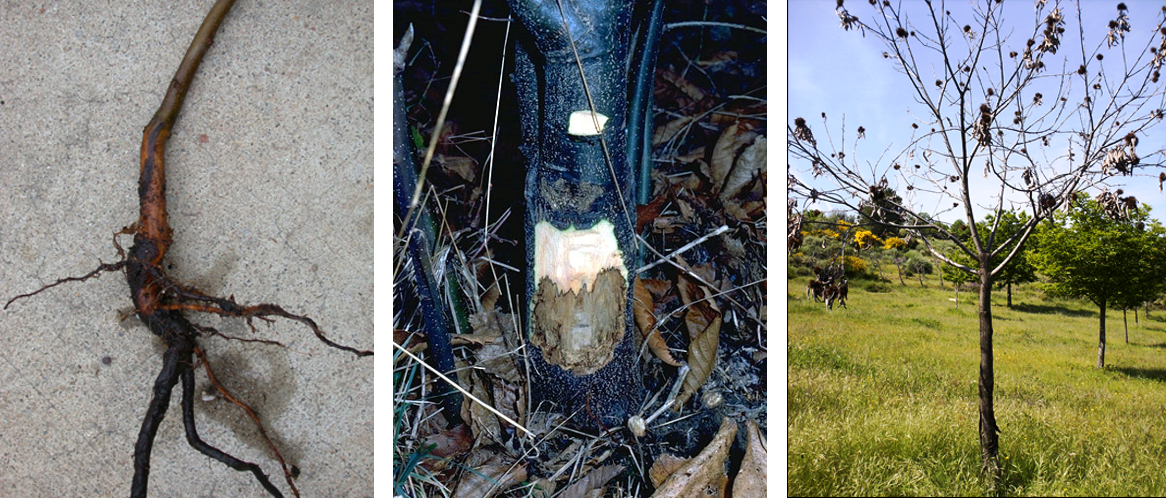Portuguese chestnuts resist
Oeiras, 7.04.2017
The European chestnut tree (Castanea sativa) has a significant economic role mainly because of the high quality of its nuts, producing 117207 tons per year.
The fungi Phytophthora cinnamomi is the most severe pathogen affecting European chestnut, causing root rot and death, resulting in large losses in chestnut production. In Portugal, there was a decrease of 27.3% in the distribution area of chestnut in 2002-2004, due to P. cinnamomi infections. P.cinnamomi has an exceptionally wide host range, being able to destroy thousands of plant species worldwide and causing devastating impacts in natural ecosystems, agriculture, horticulture, forestry and in the nursery industry. Among chestnuts, the Japanese chestnut (Castanea crenata) and the Chinese chestnut (Castanea mollissima) show resistance to P. cinnamomi. These East Asian species have been used in chestnut breeding programs as donors of resistance to root rot.

Chestnut tree degradation due to P. cinnamomi
A team work between Pedro Fevereiro Lab at ITQB NOVA and Rita Costa at INIAV have recently unveiled the molecular defense strategies against this pathogen by the Asian varieties, and the results were published in Frontiers in Plant Science.
The pre-formed defenses seem to be crucial for the resistance of these chestnut trees to P. cinnamomi. When in contact with this microorganism, C. crenata is able to produce proteins that protect the roots and strengthen the cell wall, inhibiting and reducing the fungi virulence.
According to Pedro Fevereiro, ITQB NOVA researcher, these results will enable the identification of molecular markers that will support the chestnut tree improving program. “This knowledge will provide us the tools to select chestnut varieties that are resistant to this pathogen, and ensure the sustainability of chestnut production in Portugal”.
This work was developed in the European Chestnut Improving Program, led by INIAV that has recently won the award Forest and Sustainability, in R&D projects.
Original article
Frontiers in Plant Science doi: 10.3389/fpls.2017.00515
Carmen Santos, Sofia Duarte, Sara Tedesco, Pedro Fevereiro and Rita Costa*
In the media
Descoberta a arma que o castanheiro usa para se livrar da doença da tinta, Público, 18.04.2017
Aumentar a resistência do castanheiro à doença da tinta, Notícias do Nordeste, 18.04.2017
Investigadores portugueses desvendam mecanismo de defesa do castanheiro à doença da tinta, Agronegócios, 19.04.2017
Aumentar a resistência do castanheiro à doença da tinta, Aurinegra, 19.04.2017
Investigação portuguesa pode garantir sustentabilidade da castanha, TV Europa, 19.04.2017
ITQB Nova e Iniav descobre mecanismo de defesa do castanheiro à doença da tinta, Agricultura e Mar Actual, 19.04.2017







